
Aberdeenshire is one of the 32 council areas of Scotland.
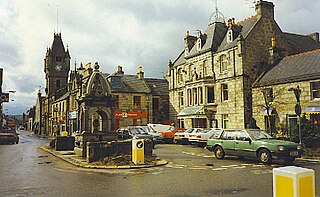
Huntly is a town in Aberdeenshire, Scotland, formerly known as Milton of Strathbogie or simply Strathbogie. It had a population of 4,460 in 2004 and is the site of Huntly Castle. Its neighbouring settlements include Keith and Rothiemay. Both Huntly and the surrounding district of Gordon are named for a town and family that originated in the Border country.
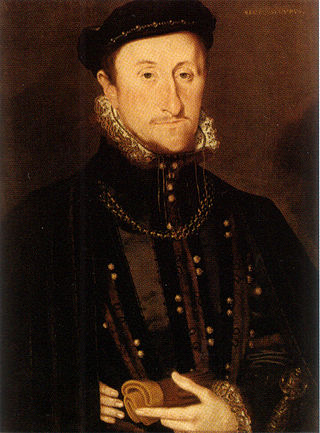
James Stewart, 1st Earl of Moray was a member of the House of Stewart as the illegitimate son of King James V of Scotland. A supporter of his half-sister Mary, Queen of Scots, he was the regent of Scotland for his half-nephew, the infant King James VI, from 1567 until his assassination in 1570. He was the first head of government to be assassinated with a firearm.

Inverurie is a town in Aberdeenshire, Scotland at the confluence of the rivers Ury and Don, about 16 miles (26 km) north-west of Aberdeen.

Banchory is a burgh or town in Aberdeenshire, Scotland. It is about 18 miles (29 km) west of Aberdeen, near where the Feugh River meets the River Dee.

Helmsdale is a village on the east coast of Sutherland, in the Highland council area of Scotland. The modern village was planned in 1814 to resettle communities that had been removed from the surrounding straths as part of the Highland Clearances.
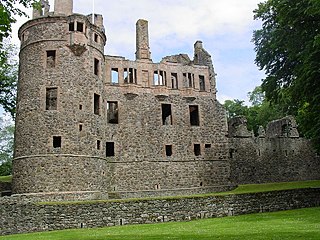
Huntly Castle is a ruined castle north of Huntly in Aberdeenshire, Scotland, where the rivers Deveron and Bogie meet. It was the ancestral home of the chief of Clan Gordon, Earl of Huntly. There have been four castles built on the site that have been referred to as Huntly Castle, Strathbogie Castle or Peel of Strathbogie.

Aboyne is a village on the edge of the Highlands in Aberdeenshire, Scotland, on the River Dee, approximately 26 miles (42 km) west of Aberdeen. It has a swimming pool at Aboyne Academy, all-weather tennis courts, a bowling green and is home to the oldest 18 hole golf course on Royal Deeside. Aboyne Castle and the Loch of Aboyne are nearby.

Aberdeenshire or the County of Aberdeen is a historic county and registration county of Scotland. The area of the county, excluding the Aberdeen City council area itself, is also a lieutenancy area. The county borders Kincardineshire, Angus and Perthshire to the south, Inverness-shire and Banffshire to the west, and the North Sea to the north and east. It has a coast-line of 65 miles (105 km). The county gives its name to the modern Aberdeenshire council area, which covers a larger area than the historic county.

Alford is a large village in Aberdeenshire, north-east Scotland, lying just south of the River Don. It lies within the Howe of Alford which occupies the middle reaches of the River Don.

Clan Gordon is a Highland Scottish clan, historically one of the most powerful Scottish clans. The Gordon lands once spanned a large territory across the Highlands. Presently, Gordon is seated at Aboyne Castle, Aberdeenshire. The Chief of the clan is the Earl of Huntly, later the Marquess of Huntly.
George Gordon, 5th Earl of Huntly, was Lord Chancellor of Scotland and major conspirator of his time.

Findlater Castle is the old seat of the Earls of Findlater and Seafield, sitting on a 50-foot (15 m)-high cliff overlooking the Moray Firth on the coast of Banff and Buchan, Aberdeenshire, Scotland.
Strathbogie is a district and river valley of northwest Aberdeenshire in Scotland, formerly one of the great divisions of that shire, called lordships or thanages, comprehending the whole original estate that King Robert the Bruce gave to the noble family of Gordon, the ancestors of the Duke of Gordon. By 1836, the lordship had become extinct.
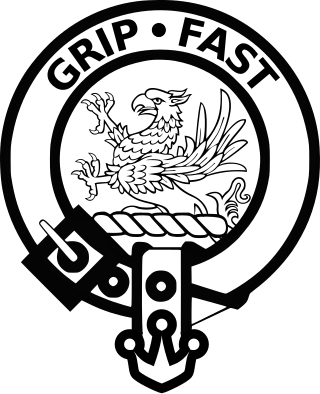
Clan Leslie is a Lowland Scottish clan. The progenitor of the Clan, Bartolf, was a nobleman from Hungary, who came to Scotland in 1067. He built a castle at Lesselyn, from which the clan name derives.
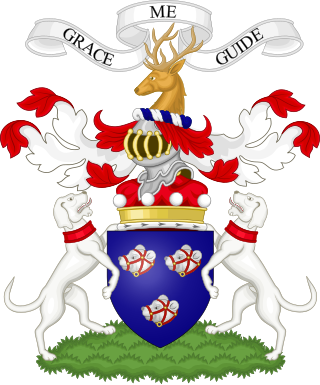
Clan Forbes is a Highland Scottish clan from Aberdeenshire, Scotland.

The Gordon Schools is a six-year, non denominational comprehensive co-educational secondary school located in Huntly, Aberdeenshire, Scotland. It takes pupils from Gordon Primary School, Insch Primary School, and smaller primary schools located around that area of Aberdeenshire such as Drumblade, Glass, Gartly, Cairney, Clatt, Rhynie and Kennethmont.
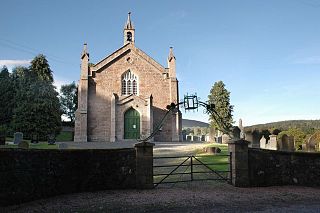
Keig is a village within the local government area of Aberdeenshire Council in the North East of Scotland and is located within the Marr area of Aberdeenshire three miles from Alford. It lies on the B992 road between Insch and the village of Whitehouse.

Alexander Laing was a Scottish architect who was mainly involved in house and castle design.




















